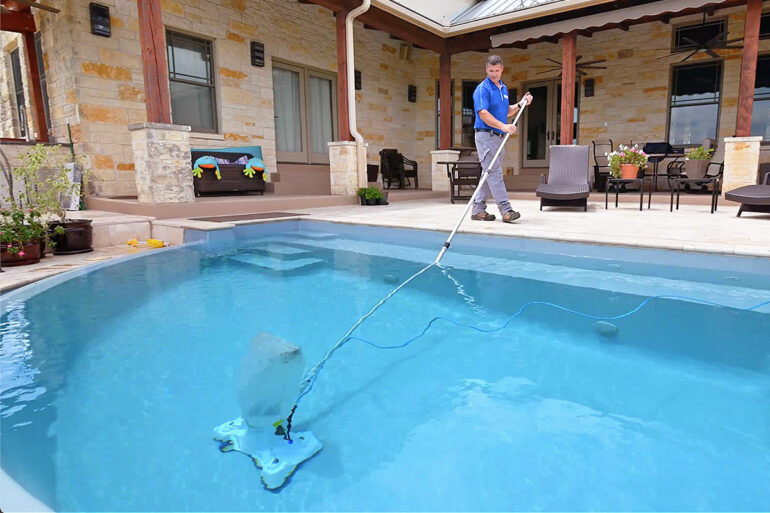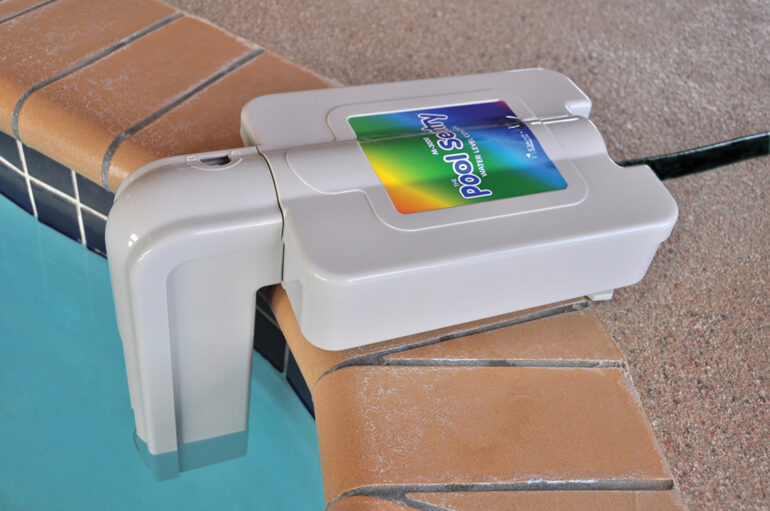Shattered Profits

I was a lifeguard in college. During one annual August shutdown, I was restringing lane ropes while contractors in a lift serviced the event lighting above the 50-meter competition pool. It was hot, they were in a rush to make up time — one technician was new and inexperienced — and they did not stop to string up a safety net. Moments later, an 18-inch lightbulb smashed into the deck next to the 992,000-gallon pool.
Thus began my first experience with broken glass in a swimming pool. Did I mention this was not a year we were scheduled to drain? We spent weeks draining and rinsing that enormous basin, finally reopening a few weeks into the fall semester after our nationally ranked swim team was displaced to the local community center for whatever practice times they could get at the last minute.
From Snapple bottles and Pyrex food containers to underwater lights, stemware, patio tabletops and decorative sculptures, glass in swimming pools is not a new concern. However, the proliferation of inexpensive and poorly manufactured glass and SCUBA-style goggles at many retailers means a significant increase in facility closures due to glass contamination.
All-inclusive resorts and cruise ships have long considered frequent pool/spa drains just the cost of doing business when selling unlimited alcohol packages; however, for most other commercial aquatic facilities, this is a major service disruption. Commercial pool operators and service technicians need to prepare for this type of emergency call.
Prevention is key. Talk with clients about the actual costs of an emergency closure due to insufficient enforcement of safety rules, such as no glass in the pool area. In 2019, the University of Iowa learned this the hard way, after canceling a high-profile swim meet and losing $21,000 in revenue — plus untold operational expenses — to drain, refill, heat and treat the pool after a glass bottle shattered in it. Service technicians must also factor in the cost of having someone else cover their route — possibly for an entire week — while providing dedicated service to one facility.
Commercial facilities subcontracting out work in the vicinity of the pool area (such as the aforementioned lighting crew) should clearly stipulate safety requirements for an environment where bathers walk around barefoot in the contract; only bonded professionals with commercial insurance should be selected for the job.
When you do get that call, what should you do? Few health regulations expressly state to drain for broken glass, but an abundance of caution mitigates major liability. “I worked with a municipal client who resisted draining the swimming pool because they felt all of the pieces of broken, tempered glass were accounted for,” says Jamie Lopes, senior project manager at Aquatic Design & Engineering in Waterloo, Ontario. “The next day, a child’s foot was sliced open from glass in the gutter of the pool during swimming lessons. Needless to say, the client drained the pool.”
In the absence of prevention, draft a comprehensive response protocol for broken glass. Consider actions such as:
- Determine the exact location where the object broke and collect as many pieces as possible
- Sweep, mop, hose and squeegee adjacent areas of the pool deck
- Stop the circulation of the pool, allow debris to settle and vacuum to waste
- Drain the pool completely, including purging lines; if possible, gravity drain or reduce pump speed so glass is not sent through the lines at high velocity
- Remove the main drain covers and pump out any trapped water
- Allow the basin to dry completely, sweep with a clean broom and dry vacuum corners
- Rinse the basin to waste, multiple times if necessary
- Visually inspect filters and complete rinse cycle, if applicable
- Clean and inspect hair trap and skimmer baskets
- Refill the basin and vacuum before restarting circulation
Even after all of these actions, it is possible glass could still be in the pool; it virtually disappears underwater. Consider vacuuming the pool daily and working with the client to implement additional protocols, including bather education, to prevent future incidents. Some clients are unwilling to drain a pool due to cost, says Jon Dawe of JRD Pool & Spa in Calgary, Alberta. If this is the case, Dawe says to spell out the risks in writing, “and wash [your] hands of any culpability from taking the easy way out. It’s just not worth the risk of personal injury to take shortcuts and not do the job right the first time.”






